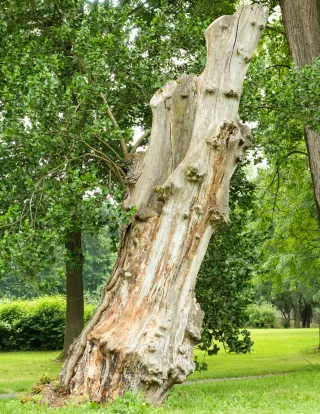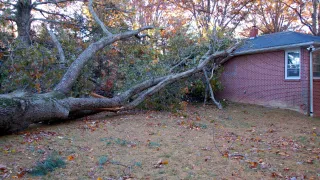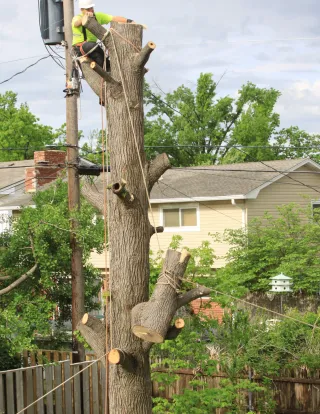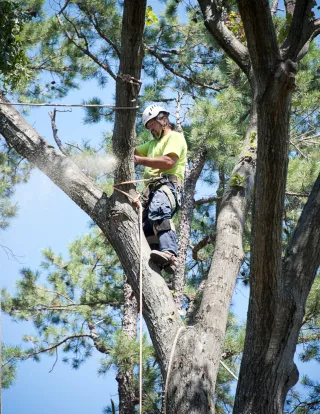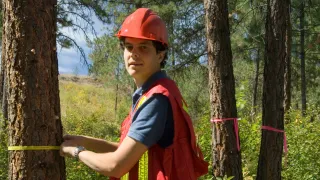
How to Spot a Dangerous Tree Before a Storm Does
Not every tree problem comes with warning signs — but some do.
And if you’ve ever had a limb fall unexpectedly, or found yourself holding your breath during a storm as branches sway a little too close to the roof, you know how unsettling it can feel. The good news is: you don’t have to wait for damage to take action.
This quick guide covers common warning signs that a tree may be at risk — so you can catch issues early, before wind or weather turns them into a bigger problem.
Warning Sign #1. Cracks or Splits in the Trunk or Major Limbs
Cracks, especially deep or spreading ones, often signal internal stress or decay. Even small splits can grow under pressure from wind or weight.
What to look for:
Cracks where large limbs attach to the trunk
Vertical splits running along the bark
Bark peeling away or exposing lighter wood beneath
Why it matters: A compromised trunk or joint can fail suddenly, especially during high winds or heavy rain.
Warning Sign #2. Dead or Dying Branches
Deadwood is brittle and unpredictable — and it’s one of the most common culprits for storm damage.
Spot the signs:
Branches with no buds, leaves, or growth when the rest of the tree is thriving
Limbs that snap easily or hang at unusual angles
Wood that feels dry, hollow, or crumbly
Dead limbs don’t always fall on their own — but storms can push them over the edge.
Warning Sign #3. Leaning or Uprooting Trees
Not all leaning trees are hazardous. Some naturally grow at an angle and stay stable for decades. But a new lean or worsening tilt is a red flag — especially if it's paired with disturbed roots or shifting soil.
Check for:
Soil cracking or lifting near the base
Exposed or upturned roots on one side
A lean that seems more noticeable over time
Storms put extra strain on root systems. A tree that’s losing stability might not recover on its own.
Warning Sign #4. Signs of Decay or Disease
Decay can weaken a tree from the inside out. Often, the visible signs are subtle — but they’re worth taking seriously.
Things to notice:
Mushrooms or fungal growth near the trunk or root zone
Bark falling off in large patches
Soft, spongy, or hollow-sounding wood
Branches that break with little effort
Trees in decline may still look “mostly fine” on the outside — until a strong storm proves otherwise.
Warning Sign #5. Proximity to Structures or Power Lines
Even a healthy tree can become a danger if it's too close to something valuable — like your roof, car, or nearby utility lines.
Ask yourself:
Are large limbs overhanging your roof or driveway?
Could falling branches hit your porch, fence, or play area?
Are any limbs within striking distance of power lines?
Storms don’t discriminate. Proximity turns a non-urgent situation into an emergency when the wind picks up.
Bonus: Trust Your Gut
Sometimes, you just feel like something isn’t right. Maybe the tree sways a little too much. Maybe a limb suddenly looks different. Maybe it just feels risky when a storm’s coming.
You don’t have to be an arborist to notice when something feels off — and you don’t have to wait for it to prove you right.
Peace of Mind Comes from Being Proactive
Storms are unpredictable, but your preparation doesn’t have to be. A quick walk around your yard, especially before storm season ramps up, can help you feel more in control and confident in your landscape.
And if you’re not sure what you’re seeing — or just want a second set of eyes — we’re here for that.
📞 Call or text us at (423) 443-4533 if you’d like to walk your yard together or talk through your concerns.
Whether it’s peace of mind or a plan of action, we’re just down the road.


